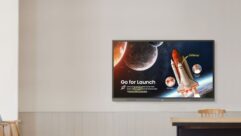Opportunities in Smart Building Technologies
Dec 14, 2011 10:12 AM,
Provided By InfoComm International
The rise of SBT presents both a daunting challenge and a compelling opportunity for AV professionals. What sets SBT apart from other trends is the cross-industry goodwill and collaboration that will drive SBT to the forefront of all construction projects in the near future. For AV implementers who are ready to pursue SBT, here are five keys to success:
1) Energy management and monitoring systems
SBT is different from LEED and other recent trends because it takes the building occupants into account. Their impact on building operation is an area that needs to be understood by anyone who wishes to act as the SBT project manager for the building’s construction.
“SBT will remove some of the occupant decision-making while offering occupants more feedback on their actions. A cubicle dweller can still bring in the under-desk-space heater, but the outlet is sub-metered; the energy usage will show up on the cube dweller’s desktop LCD so he or she can directly see the relationship between that heater and the building’s energy consumption,” says Allen Weidman, InfoComm’s sustainability officer and sustainability expert.
2) Building dashboards
Energy monitoring is often rolled into a larger, holistic view of the building via a building dashboard. Companies who specialize in dashboard user interfaces are data visualization experts who recognize how best to lay out the information in easy-to-understand graphs or charts. AV’s role isn’t to also become data experts but to understand how these dashboards aggregate and relay information to building occupants.
Building dashboard designs range from the simple webpage to a more complex series of information trees. No matter what the design, the goal is the same: to convey the realtime status of every system in the building.
3) Mechanical systems
For AV professionals must be well-versed in the language and protocols used by MEP (mechanical, electrical, plumbing) firms. Specifically, commercial and industrial mechanical systems are complex and are very different from anything that is encountered in the residential market. BACnet, a communications protocol, is a popular standard for HVAC, life safety, and other systems. Many commercial and industrial building automation and control systems use BACnet for primary systems communications. BACnet International oversees the testing and adoption of BACNet, and it is a great resource to learn more about the protocol.
4) Lighting control
Lighting is sometimes forgotten when dealing with audio and video systems. Most often, lighting and lighting control is under the purview of the electrical contractor and not the AV contractor. As with mechanical systems, lighting control relies on a communication protocol to interface with the building automation system.
5) STEP
AV professionals who want to fully understand SBT should read the STEP Foundation’s design manual once it is made public. Approximately one-third of all points awarded in the STEP program are related to SBT and STEP will play a large part in helping AV professionals make the leap into the SBT project manager role.
Weidman notes that the information needed to start a STEP project is already available from manufacturers and others in the AV industry. “However, to help the AV professional, the STEP Foundation will be developing educational programs for the AV pro as well as architects, designers, and building operators. Additionally, the foundation will be developing a ‘verifier’ educational program to help insure consistency and transparency in evaluating designs and installations that will be submitted to STEP,” he adds.
The above is an excerpt from InfoComm International’s Special Report “Five Keys to SBT Success.” Read the full report at www.infocomm.org. To learn more about STEP, visit www.thestepfoundation.org.










